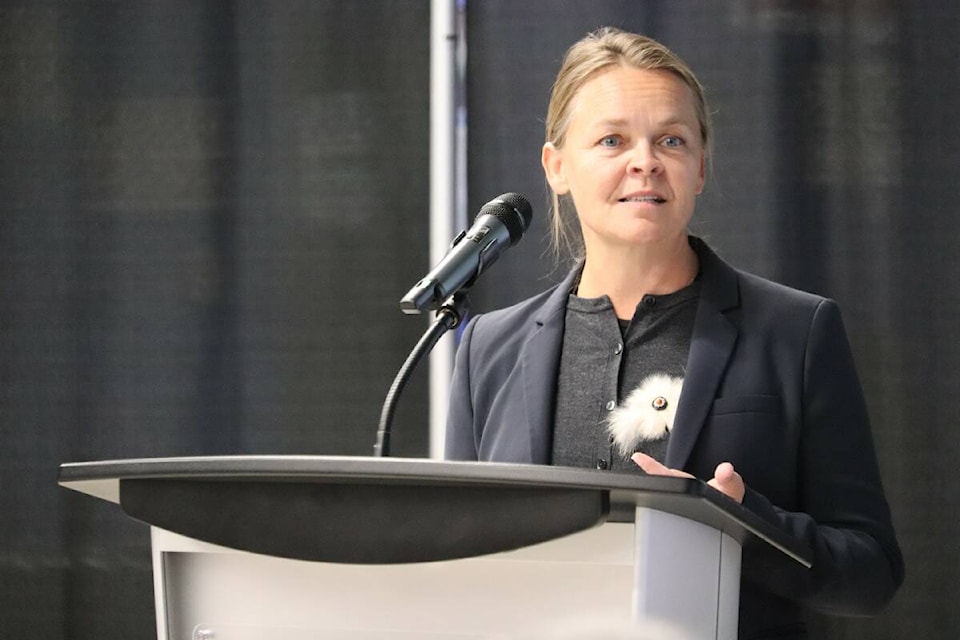There are many opportunities where Nunavut can learn from Greenland and Denmark’s transition to more renewable sources of energy, according to Denmark’s Ambassador to Canada, Hanne Fugl Eskjær, who visited Iqaluit on Sept. 20 during the Nunavut Trade Show.
“What I think we can offer from Denmark is experience,” said Eskjær.
“I’ve come to the Trade Show and to Nunavut with acknowledgement that we all have different climate conditions and needs. I very much came to listen and learn how Nunavut is working with this transition into more clean energy.”
Denmark went from largely being dependent on fossil fuels to producing 50 per cent of its electricity through solar and wind, with additional sources of heat and energy coming from incinerators, biomass and geothermal sources.
Eskjær spoke on a conference panel about Nunavut’s green energy transition while attending the Trade Show, highlighting Greenland’s experience in renewables as well. Trash incinerators and five hydro-electric plants make up a significant part of Greenland’s renewable sources of energy.
“I think we have some cost-effective solutions. We have learned our lessons, we have tried things that did not work out, so now we have solutions that could actually work in that cold, Arctic climate,” said Eskjær.
“We’ve made part of that journey and we’re still learning but we’ve done it in a way where it could go hand-in-hand with economic development and job creation.”
While it’s important for the people of the Arctic to make that transition to renewable sources of energy, it’s also important for the bigger emitters of C02 emissions elsewhere to make that transition.
“People in the Arctic are not big emitters, so it has to go hand-in-hand with the big emitters making changes on a global scale,” said Eskjær.
Recent studies published by climate scientists on Communications Earth and Environment on August 11 estimate the Arctic is warming four times faster than the rest of the world.
Opportunities for cooperation; Green Energy, Health and Peace
In late August Northern premiers and leaders from across the Arctic attended the Arctic Circle Forum in Nuuk, Greenland. Included among the meetings taking place in Nuuk was the signing of a memorandum of understanding between the Nunavut and Greenlandic governments to help establish a future working relationship.
The same spirit of cooperation existed for the Danish delegation while they were in Iqaluit, said Eskjær.
“I felt when I was in Nunavut there was a real interest (in cooperation) and I feel the same in Ottawa and other places,” she said.
“Health and mental health for our Elders is an area where we could work together and having a peaceful Arctic where the developments are to the benefit of the peoples of the North.”
While in Nunavut the Ambassador also met with Nunavut Commissioner Eva Aariak, Premier P.J. Akeeagok and various Nunavut ministers as well as Inuit Organizations such as the Qikiqtani Inuit Association and Nunavut Tunngavik Incorporated.
